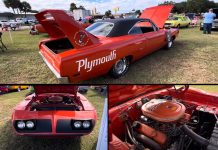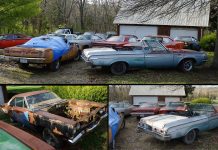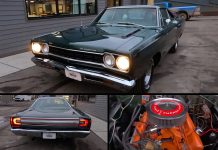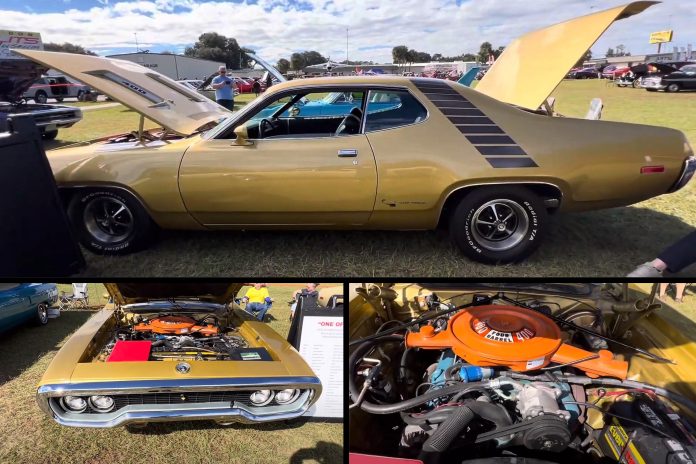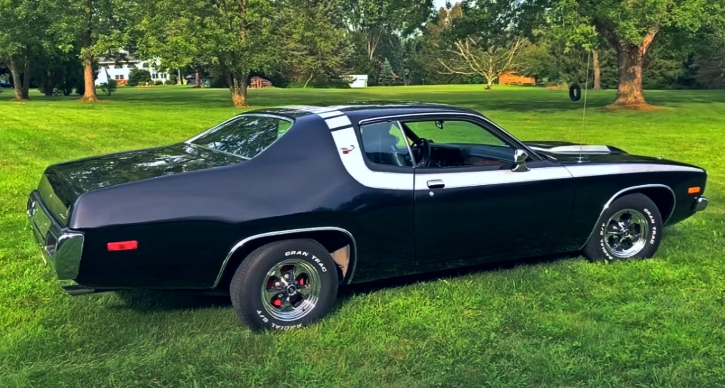Introduction to the 1968 Plymouth Road Runner
Introduced in 1968 as an entry-level muscle car, the Plymouth Road Runner quickly gained popularity, becoming a standout in the market. Over the first three years, it outperformed premium models like the GTX and Dodge Super Bee, with more than 160,000 units delivered by 1970.

Sales took a hit in 1971, dropping dramatically to 13,664 units due to soaring insurance rates for high-performance cars, marking the end of the 426 HEMI and 440 Six-Barrel V8s. The lowest point came in 1972, with only 6,860 units sold, making it the rarest iteration of the Road Runner.

Despite being the rarest, the 1972 Road Runner wasn’t the most desirable, lacking the HEMI or the six-barrel version of the 440 RB. However, this model spawned a few unique gems, such as the Gold Leaf Poly example discussed here.
The Evolution of the Road Runner in 1972
In 1972, the Road Runner lost the 426 HEMI and 440-6 V8s. The 383-cubic-inch mill was also discontinued. However, it gained a four-barrel 440, a 400-cubic-inch big-block, and retained the 340-cubic-inch small-block from the previous year.

The 440 was exclusive to the top-tier GTX trim, with only 672 units sold. The entry-level 340 was more popular, moving 2,360 units. The 400-cubic-inch V8, present in this Road Runner, was ordered in 3,828 cars, with the uniqueness of a three-speed manual drivetrain, making it one of 1,433 examples.

This particular Road Runner stands out due to its combination of factors. As an export car, it adds to the rarity, and the Gold Leaf Poly paint, along with features like air conditioning, tinted glass, and hood-mounted turn signals, makes it a distinctive one-of-one model.
The Value of the 1972 Plymouth Road Runner
While a one-of-one status might not significantly impact the value of a 1972 Road Runner, this car, in particular, holds its own. Despite its assembly at the onset of the Malaise Era, it remains a cool and spotless classic, guaranteed to capture attention at any car show.



The 400 V8 engine delivers 255 net horsepower, ensuring the Road Runner’s performance prowess. Despite the era’s challenges, it can cover the quarter-mile in around 15 seconds, showcasing its enduring appeal among classic car enthusiasts.
# FAQs
**Q1:** Why did Road Runner sales drop in 1971?
**A:** Sales plummeted in 1971 due to escalating insurance rates for high-performance cars.
**Q2:** What makes the 1972 Road Runner unique?
**A:** The 1972 Road Runner is unique due to its rarity, being an export car, and featuring a distinctive Gold Leaf Poly paint along with various options like air conditioning and hood-mounted turn signals.
**Q3:** How valuable is a one-of-one status for a 1972 Road Runner?
**A:** While not significantly impacting the value, the one-of-one status adds to the allure of the car, making it stand out among enthusiasts.



